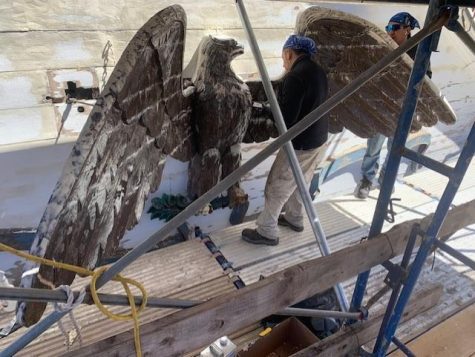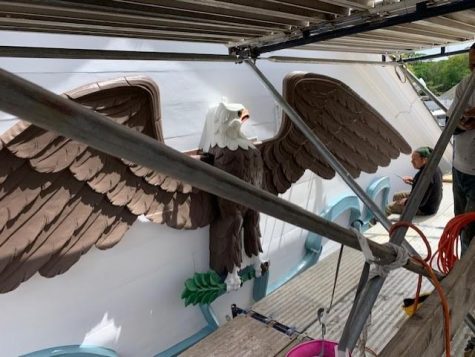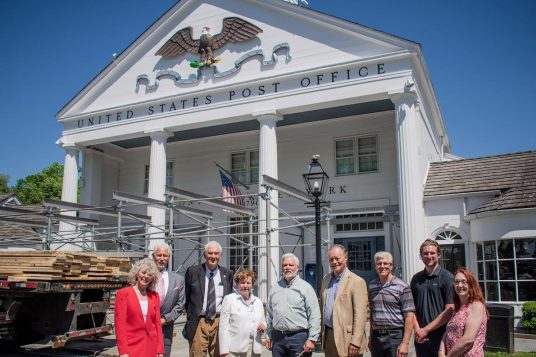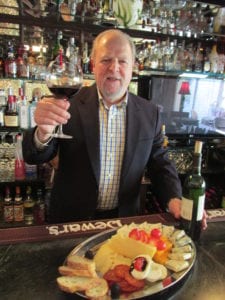By Tara Mae
Ingenuity and imagination synthesize into innovation. The Long Island Explorium, a science and engineering museum in Port Jefferson, celebrates the projects and persons involved in this process with the 7th annual Maker Faire Long Island at the Port Jefferson Village Center, LI Explorium and Harborfront Park at 101 East Broadway on Saturday, June 8 from 10 a.m. to 5 p.m.
Featuring more than 75 exhibits and 120 presenters showcasing their creations, this multi-sensory experiential event lauds efforts in science, technology, engineering, arts, and math (STEAM). Exhibits range from robotics and cosplay design to environmental engineering projects, scientific advancements, kinetic art, and fire sculptures.
Highlights include:
Adam Foster’s Royal Trumpets: Majestic 15-foot kinetic pyrotechnic sound sculptures.
Mandalorian Mercs Costume Club: Bringing the Star Wars universe to life. (pictured above)
Long Island Drone Soccer: An electrifying new sport combining drone technology with soccer.
Princesses with Powertools: Empowering young engineers with hands-on projects.
Balloon Bot Brawl: A thrilling robot showdown led by high school maker Ray Rumore.
Learn to Solder Workshop: Taught by Elijah Horland of Mythbusters Jr, sponsored by PCBWay.
Besides individual contributions, organizations such as Suffolk County Community College, Brookhaven National Labs, and Stony Brook University will show some of their work. Scientists and educators from the university will also participate in ‘Ask a Scientist” Q&A sessions that enable young attendees to cultivate their curiosity as they ask scientific questions of professionals.
In addition to the dialogues, displays, and demonstrations, the Faire will have live musical performances, including a songwriter showcase, from 1 to 5 p.m., and two performances by the Umisora Taiko Drummers.
“Maker Faire is a global movement that combines elements of classic science fairs with innovation, creativity, and STEAM. It is known as the ‘Greatest Show & Tell on Earth,’ showcasing makers’ ingenuity and creativity. Maker Faire Long Island…embodies this spirit,” said Long Island Explorium’s Director of Digital Media/Marketing/Programming Lisa Collet Rodriguez.
With conventions in other locations like New York City, San Francisco, Barcelona, and Berlin, the Maker Faire Long Island is part of a larger international initiative that fuses scientific experimentation with artistic expression. By embracing these pursuits, the family-friendly occasion seeks to engage audiences of all ages, with interactive elements geared towards youth.
“I wish I had [Maker Faires] when I was younger. They have provided me a platform and support to share my works with tens of thousands of makers across the country, and inspire future generations of makers. It’s a win win,” said maker Adam Foster, of Rochester.
A musician, steel fabricator designer, and engineer, Foster made “The Royal Trumpets,” six 15 foot tall kinetic sculptures. They allude to the trumpets that historically announced royalty. And at the Maker Faire, this grandeur is both a celebration of community and an invitation for new members to join it.
Encouraging visitors to dream and learn are not the only collective goals shared by many of the participants. The Faire is an opportunity for pragmatic ponderers and methodical mavericks to network with each other.
“Popular subcultures always have places to gather, such as Comic-Con. Maker Faire is that place for people passionate about the intersection of Arts and STEM now called STEAM,” maker Elijah Horland, of Brooklyn, said. “At a Maker Faire we gather, not just to show off our skills, but to collaborate with peers, mentors, and beginners alike in a supportive environment.”
Through his company, Not-A-Bomb, Horland develops mechatronic projects that incorporate engineering lessons curated to entertain and educate. He is a MythBuster from the Discovery Channel reality show and the executive producer of Maker Faire Coney Island.
A number of the makers participate in other Maker Faires throughout the country, sharing their projects with interested parties and building relationships.
“Maker Faires are these amazing events where people from all different backgrounds and with all different interests can come together and find a bigger community,” said maker Caeley Looney of Austin, Texas.
Originally from Farmingdale, Looney is the founder and CEO of Reinvented Inc., a nonprofit organization that hosts Princesses with Powertools. The program connects girls with women in Science, Technology, and Math (STEM) professions who, while dressed as princesses, teach them how to operate their first power tools.
“Innovation is diversity driven. Without having diverse minds and voices working on the leading edge of science and technology, new ideas, products, and solutions will never be created. Women play a huge role in this, but historically have been left out of these fields and conversations — and that bias and pushback is still felt by students today,” she added.
Bringing STE[A]M to individuals who historically have less access to it is a motivating factor and ongoing endeavor for many Faire associates, according to Long Island Explorium Executive Director Angeline Judex.
“Many people don’t think of museums as agents of social change in communities, but the Long Island Explorium plays a vital role on Long Island as a lighthouse of enriching STEM programs that foster inventive thinking and serve as a catalyst for empowerment,” Judex said.
“The Maker Faire is strategically aligned with our vision to promote STEM discovery, learning, and innovation that will shape the intellect, social values, and principles of future generations,” she added.
Advanced tickets may be purchased online through EventBrite. Individual tickets, including fees, are $13.36 per person. A family pass, which has tickets for two adults and up to five children, are $57.65 including fees. Tickets at the door for individuals are $16.65, including fees. Tickets at the door for family passes are $62.80, including fees.
For more information, including a complete list of exhibitors and schedules, visit longisland.makerfaire.com.


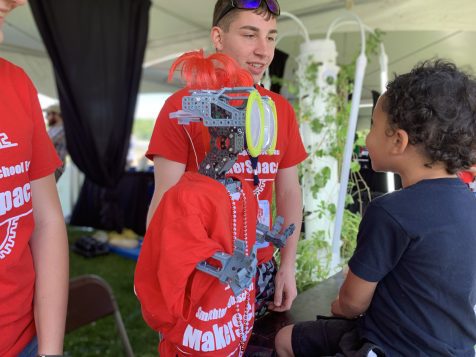




 Tickets are now on sale for the 12th annual Rocky Point Garden Tour, a self-guided walk through the community’s best home gardens, on Saturday, June 15 from 10 a.m. to 3 p.m. with garden goods for sale and raffle. $20 per person. Tickets are available at Heritage Paint, 637 Route 25A, Rocky Point and Flowers on Broadway, 43 Broadway, Rocky Point. All proceeds benefit the Rocky Point Civic Association. For more information, call 631-521-5726.
Tickets are now on sale for the 12th annual Rocky Point Garden Tour, a self-guided walk through the community’s best home gardens, on Saturday, June 15 from 10 a.m. to 3 p.m. with garden goods for sale and raffle. $20 per person. Tickets are available at Heritage Paint, 637 Route 25A, Rocky Point and Flowers on Broadway, 43 Broadway, Rocky Point. All proceeds benefit the Rocky Point Civic Association. For more information, call 631-521-5726.


